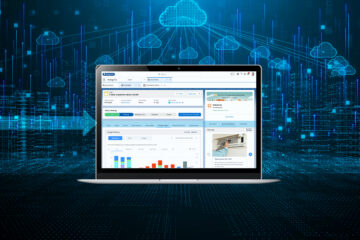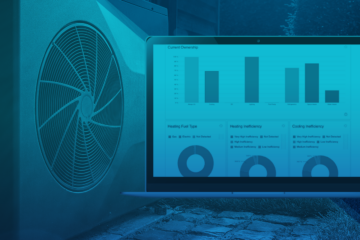In light of Duke’s recent EV announcement, we’re sharing highlights from Lang Reynolds’ session at Bidgely Engage 2020. To learn more about Bidgely’s EV solution, watch a short demo.
Capitalizing on the EV Transformation: Lessons from Duke Energy
Earlier this month, Duke Energy announced a partnership with American Electric Power, Dominion Energy, Entergy Corporation, Southern Co., and the Tennessee Valley Authority to take steps within their service territories to ensure electric vehicle (EV) drivers have access to a seamless network of DC fast charging stations connecting major highways in the South, Midwest, Gulf and Central Plains regions.
“The path to cleaner transportation is a robust charging infrastructure along the nation’s major highways,” said Lang Reynolds, Director of Electrification Strategy for Duke Energy. “Range anxiety is a barrier to more EV adoption. This coalition can erase those obstacles and help deliver the benefits of EV ownership to consumers.”
In light of this recent news, we’re sharing highlights from Lang’s session at Bidgely Engage 2020, where he shared key insights on how his team uses a data-driven approach in their efforts to electrify everything.
As Lang’s session revealed, the highway charging network partnership is the latest advance in a string of ambitious moves from Duke Energy, which is investing heavily in a multi-pronged strategy to establish utility leadership in the EV space with programs not only focused on infrastructure development, but also on engaging and increasing the number of current and future EV owner customers, heavy duty fleet scaling, rate planning and data-driven forecasting.
“We see the biggest barriers to EV adoption are awareness of the vehicles and their capabilities; infrastructure to fuel the vehicles; and the cost of those vehicles. That’s why we’ve built out our programs to attack all three of those barriers,” Lang explained.
In Florida, the company’s Park and Plug pilot has installed more than 570 EV public charging stations statewide. Drivers have so far used Duke’s Park and Plug network for 60,000+ charging sessions, displacing more than 90,000 gallons of gasoline.
In North Carolina, where the state has set a target of 80,000 EVs on the road by 2025, Duke is introducing a $25 million pilot program to install 200 public Level 2 and fast charging stations, additional stations at multifamily buildings and a fleet scaling school bus electrification program that will allow school districts to change out diesel buses with electric ones.
In South Carolina, the company will provide up to a total of $1,000 for 400 residential Duke Energy Carolinas customers who install a Level 2 charging station, provide access to their charging data, and manage EV charging load to occur during off-peak periods. The company will also deploy 60 fast chargers there to expand access to fast charging infrastructure in the state.
“We believe that electrification puts downward pressure on rates by increasing system utilization of the electric grid and spreading our fixed costs over a greater number of kilowatt hours. That’s a pretty substantial benefit for our customers,” Lang emphasized. “Our cost-benefit analyses have revealed that driving more electrification of transportation can add up to some pretty big numbers. In fact, if we shift from the current business-as-usual trajectory to a high adoption scenario, there can be upwards of $65 billion in cumulative net benefits.”
EV Customer Engagement: Amplifying AMI ROI
Over the last 15-20 years, utilities have invested heavily in creating robust AMI infrastructure. As Duke Energy is demonstrating, there is an opportunity now to amplify that investment as disaggregated AMI data unlocks powerful insights that can inform utility EV strategies and better engage customers who are both current and prospective EV owners.
“We have a large data-driven marketing and education initiative that advertises EVs and their capabilities to our customers to make sure that they know that these vehicles are available, that they’re affordable, that they will deliver savings over time, that they’re fun to drive and, in many cases, that they’re faster than their gasoline equivalents,” Lang described.
“When we looked at the growth rate in 2019, we found EV registrations in our Florida service territory were approximately 50 percent higher than in the state of Florida overall,” he said. “Given the fact that our program is the only thing that’s different about our service territory versus the rest of Florida, we believe we can tie that growth back to our EV program enrollment program and show that it is having an impact on EV growth in our service territory versus the rest of the state.”
The Advantage of Utility-Owned EV Infrastructure
Duke’s pilot program in Florida has been running for several years, including the installation of charging infrastructure across four different segments: level two deployments in multi-family dwellings, workplace locations and public locations, plus DC fast charging stations along highway corridors. In total, the utility plans to install 210 multi-family ports, 140 workplace ports, 130 public charging ports and 50 fast charging ports.
Also of note are the program’s benefits for LMI customers. The pilot included a low income requirement to ensure that at least 10 percent of the ports would be installed in low income communities (53 out of the total 530). The utility has already far exceeded that goal with 85 ports installed in low-income communities to date.
“All of these stations are utility owned and operated, and we think that’s important, at least in the pilot phase, to ensure that the stations are used and remain useful over the full life of the asset,” Lang explained. “We’ve seen a lot of examples in the market where long-term operators have been unable to maintain stations — which is a black eye for the industry. It’s worse to have a station that doesn’t work or that has fallen into disrepair than to have no station at all. So we are owning, operating and standing behind the infrastructure over the full life of the asset.”
Duke anticipates that they will achieve their deployment targets within two years, which is ahead of their initial five-year timeline. They are also running significantly under budget.
“Our Florida pilot proves that utilities can install this infrastructure in a way that is cost effective and provides benefits to all of customers in terms of utilization,” he said.
Advice for the Industry
“We think that electrification is really a strong economic development initiative for the company, but we also recognize that the programs that we have underway — though successful — are only a start when it comes to getting the infrastructure built out,” Lang emphasized.. “When we look at where we want to be, and what we think is coming in the future, the utility industry needs to get much more aggressive and operate at a much larger scale. To facilitate that, we’re leveraging technology programs like disaggregation, propensity modeling and other AI tools, which we believe will play a key role in accelerating our EV programs going forward.”
Our ‘Plug’ for Advanced AnalyticsAt Bidgely, we commend the use of advanced analytics to predict, manage, and promote EV adoption. Using the UtilityAI™ platform to analyze AMI data, utilities can identify exactly which customers are charging electric vehicles, and develop personalized insights to inform the outreach that the utility wants to do to help market and recruit customers into the program. UtilityAI also empowers utilities to make customers aware when they are charging during peak rates, and to send reminders about incentives and how charging behaviors impact the ability to receive those incentives. To learn more about Bidgely’s EV solution, watch a short demo. To see Lang’s full session from Bidgely Engage, click here or visit bidgely.com/engage.


